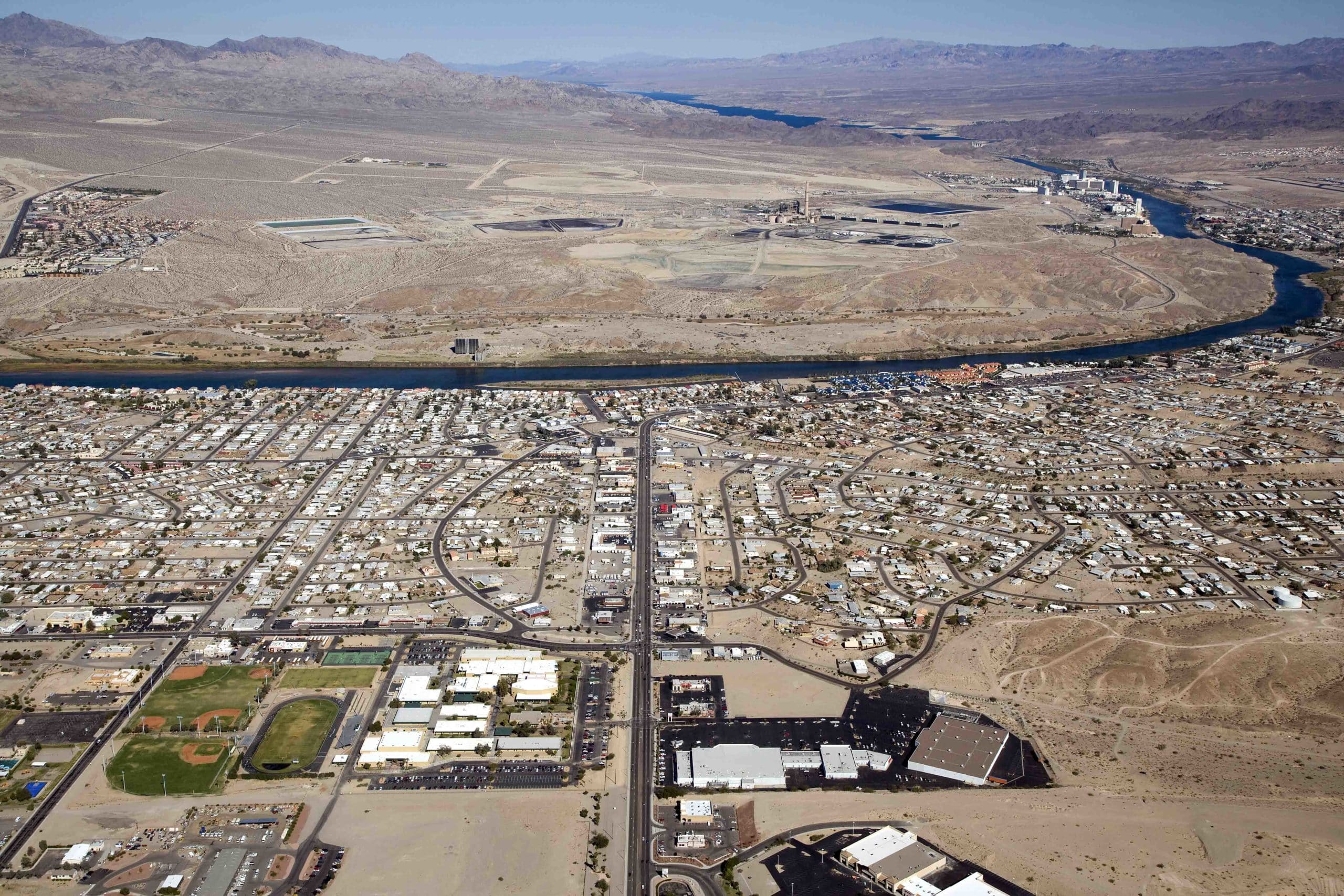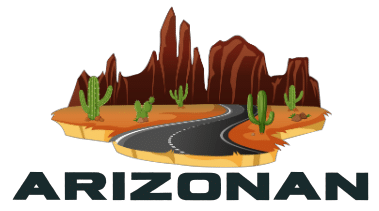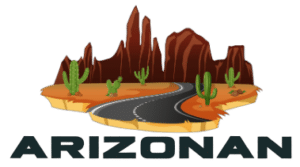
Colorado City, Arizona
Colorado City is a small town located in Mohave County, Arizona, near the borders of Utah and Nevada. The town is known for its natural beauty and outdoor recreational opportunities. With a population of approximately 5,000, Colorado City is a tight-knit community with a rich history.
Thank you for reading this post, don't forget to subscribe!Colorado City was founded in 1913 as a settlement for members of the Fundamentalist Church of Jesus Christ of Latter-Day Saints (FLDS). The town has a tumultuous history, with residents and leaders often involved in legal disputes related to the practice of polygamy and other FLDS beliefs. In recent years, the town has diversified, with more non-FLDS residents moving in and contributing to the community’s growth and development.
Colorado City is approximately 359 miles north of Phoenix, Arizona, a drive that takes about 5 hours and 30 minutes. The most direct route is to take I-17 N toward Flagstaff and then US-89 N toward Page, followed by a turn onto AZ-389 W.
The economy of Colorado City is primarily based on tourism, agriculture, and small businesses. The town’s location near gorgeous natural attractions such as the Grand Canyon, Zion National Park, and Lake Powell brings in tourists who enjoy outdoor recreational activities. Additionally, the community relies on farming and ranching, with some families maintaining these traditions for generations.
Colorado City is served by the Colorado City Unified School District, which includes an elementary school, a middle school, and a high school. The district is committed to providing quality education to its students, with a focus on small class sizes and individualized attention. Additionally, the nearby Mohave Community College offers higher education opportunities and vocational training for residents.
Colorado City has a medical clinic that provides basic healthcare services to residents. More specialized care and hospitals are available in nearby larger cities such as St. George, Utah, or Kingman, Arizona.
The real estate market in Colorado City offers a mix of single-family homes, townhouses, and vacant land for development. The cost of living is relatively low compared to other areas in Arizona, making it an attractive option for those looking to settle down in a rural community.
Things to Do
Outdoor activities are abundant in and around Colorado City. Residents and visitors can enjoy hiking, horseback riding, off-road trips, and exploring the nearby national parks. Additionally, the town is home to several golf courses, providing opportunities for residents and tourists to enjoy a round of golf in the stunning desert landscape.
Attractions and Points of Interest
Some attractions and points of interest near Colorado City include:
– Grand Canyon-Parashant National Monument: A vast and remote landscape offering exceptional opportunities for solitude and outdoor recreation.
– Pipe Spring National Monument: A historical site preserving American Indian and early Mormon pioneer history.
– Zion National Park: A beautiful park in Utah with stunning red rock cliffs, waterfalls, and diverse plant and animal life.
– Coral Pink Sand Dunes State Park: A unique park in Utah featuring pink-colored sand dunes and opportunities for off-road vehicle exploration.
Places to Stay
Colorado City has a few motels and inns for visitors to stay in, while more extensive lodging options are available in the nearby cities of St. George, Utah, and Kanab, Utah.
Government Structure
Colorado City is governed by a town council and a mayor. The town council is responsible for making decisions and passing ordinances for the community, while the mayor oversees the day-to-day operations of the town. For more information on the town’s government, visit the official website [here](https://www.colorado-city-az.us/).
Clubs and Organizations
There are various clubs and organizations in Colorado City that cater to the interests of residents, including gardening clubs, sports clubs, and community service organizations.
Golf Courses
There are several golf courses in and around Colorado City, including the Coral Cliffs Golf Course, which offers a challenging and scenic 9-hole course.
Hiking
The area surrounding Colorado City offers numerous hiking trails, ranging from easy walks to challenging backcountry adventures. Some popular nearby trails include the Water Canyon Trail, Canaan Mountain Wilderness, and trails within Zion National Park.
Quality of Life
Colorado City offers a high quality of life for those looking for a small-town atmosphere and a close-knit community. With a low cost of living, beautiful natural surroundings, and ample outdoor recreation opportunities, Colorado City is an attractive option for both families and retirees.
Transportation
Colorado City is accessible by car, with the main highway, AZ-389, running through the town. The nearest major airport is St. George Regional Airport in Utah, about 50 miles away.
Shopping
Colorado City has a small selection of shops and stores for residents to purchase basic necessities, while more extensive shopping options are available in nearby larger cities such as St. George, Utah, and Kingman, Arizona.
Art and Culture
Colorado City has a small but growing arts and culture scene, with local artists and artisans showcasing their work at community events and galleries. Nearby cities such as St. George and Kanab offer a more extensive range of cultural attractions, including museums, galleries, and performing arts venues.
Climate
Colorado City has a semi-arid climate with hot summers and cool winters. The town sees an average of 300 days of sunshine a year, making it ideal for outdoor enthusiasts. Summer temperatures can reach the high 90s, while winter temperatures can drop into the 30s.
Community Involvement
Residents of Colorado City are active in their community, participating in local events and volunteering with various organizations. The town hosts several annual events and festivals that bring the community together, such as the Colorado City Music Festival and the Colorado City Days celebration.
Sports and Recreation
Outdoor sports and recreation are popular in Colorado City, with residents and visitors enjoying activities such as hiking, horseback riding, off-road trips, golfing, and exploring nearby national parks. The town also has a community park with sports fields and playgrounds for family-friendly recreation.
Dining and Nightlife
Colorado City has a small selection of restaurants and cafes, offering a variety of cuisine options. For a more extensive dining and nightlife scene, residents can visit nearby cities such as St. George or Kanab.
Local Festivals and Events
Some annual events and festivals in Colorado City include:
– Colorado City Music Festival: A celebration of local music and talent held each summer.
– Colorado City Days: A community event featuring a parade, games, food, and entertainment.
Notable Residents
Warren Jeffs, the former leader of the FLDS Church, was a resident of Colorado City. His imprisonment in 2007 led to significant changes within the community and the town’s governance.
Government Structure and Services
The town of Colorado City provides various services to its residents, including public safety, utilities, and community development. For more information on the town’s government and services, visit the official website [here](https://www.colorado-city-az.us/).
Clubs and Organizations
Colorado City is home to several clubs and organizations that cater to a range of interests, from gardening to sports. These organizations provide opportunities for residents to connect with others who share their passions and contribute to the community.
Shopping and Retail
While Colorado City has a limited selection of shops and stores, residents can find most of their basic necessities within the town. For more extensive shopping options, nearby cities such as St. George and Kanab offer a wider range of retail outlets.
Public Art and Cultural Attractions
Colorado City’s growing arts and culture scene includes local artists and artisans showcasing their work at community events and galleries. Nearby cities such as St. George and Kanab offer a more extensive range of cultural attractions, including museums, galleries, and performing arts venues.
Transportation and Accessibility
Colorado City is accessible by car via AZ-389, which runs through the town. The nearest major airport is St. George Regional Airport in Utah, about 50 miles away. Public transportation options are limited within the town, but residents can access nearby cities for additional transportation options.
Sustainability and Environmental Initiatives
Colorado City is committed to preserving its natural beauty and promoting sustainable practices. The town encourages residents to participate in recycling programs and water conservation efforts. Additionally, the community is exploring ways to harness renewable energy sources such as solar power.
Horseback Riding
Horseback riding is a popular activity in and around Colorado City, with several stables and ranches offering guided trail rides and lessons. The nearby national parks and monuments also provide excellent opportunities for horseback riding enthusiasts to explore the stunning landscapes.
Off-Road Trips
Off-road trips are a popular recreational activity in the Colorado City area, with many trails and areas available for exploration. Coral Pink Sand Dunes State Park, in particular, is a popular destination for off-road enthusiasts.
Ranching
Ranching is an integral part of Colorado City’s history and culture, with many families maintaining their ranching traditions for generations. The town’s surrounding landscape provides ample opportunities for cattle grazing and other ranching activities.
Farming
Agriculture is a significant part of the economy in Colorado City, with many residents involved in farming and related activities. The area’s climate and fertile soil support the growth of a variety of crops, including fruits, vegetables, and grains.
Family Activities
Colorado City offers numerous family-friendly activities, both within the town and in the surrounding areas. Families can enjoy picnics at the community park, explore nearby national parks and monuments, or take part in local events and festivals. The town’s close proximity to outdoor attractions allows families to experience nature and create lasting memories together.
Outdoor Education and Adventure
The natural beauty of the Colorado City area provides opportunities for outdoor education and adventure. Local outfitters and tour operators offer guided excursions into the nearby wilderness areas, providing hands-on learning experiences and fostering a deeper appreciation for the region’s unique environment. Activities such as birdwatching, wildlife spotting, and stargazing are popular ways to connect with nature and learn about the local ecosystem.
Local Businesses and Entrepreneurs
Colorado City has a growing community of local businesses and entrepreneurs that contribute to the town’s economy and character. From family-owned restaurants and shops to innovative startups, these businesses help create a vibrant atmosphere and support the needs of the community. By shopping locally, residents can invest in the economic growth and future of Colorado City.
Nearby State Parks and Recreation Areas
In addition to the aforementioned national parks and monuments, there are several state parks and recreation areas near Colorado City that offer a variety of outdoor activities. These include:
– Snow Canyon State Park: A diverse park in Utah featuring red rock formations, sand dunes, and lava tubes.
– Quail Creek State Park: A popular destination for boating, fishing, and picnicking in Utah.
– Sand Hollow State Park: A Utah park with a large reservoir that offers water-based activities such as swimming, fishing, and boating.
Wildlife and Natural Habitat
Colorado City and its surrounding areas are home to a diverse range of plant and animal species. The town’s proximity to national parks, monuments, and other protected areas allows residents and visitors to observe wildlife in their natural habitat. Commonly spotted animals include mule deer, coyotes, and various bird species. The region’s unique flora, such as sagebrush and Joshua trees, adds to the area’s natural beauty and ecological importance.
Volunteering and Community Service
Volunteering and community service are integral aspects of life in Colorado City. Residents have the opportunity to give back to their community by participating in local projects and initiatives, such as park clean-ups, food drives, and educational programs. These efforts not only benefit the town and its residents but also help foster a strong sense of community pride and connectedness.
Senior Services and Activities
Colorado City offers various services and activities for seniors, including a senior center that provides recreational, educational, and social programs. The center is a hub for seniors to connect, share experiences, and stay engaged with the community. Additionally, the town has several healthcare facilities and providers that cater to the needs of older residents.
Youth Programs and Activities
Youth programs and activities are available in Colorado City to support the town’s younger residents. These programs include sports leagues, after-school clubs, and summer camps that foster personal growth, skill development, and socialization. By participating in these activities, young people can build lasting friendships, develop leadership skills, and contribute to their community.
Emergency Services
Colorado City is served by a dedicated team of emergency responders that includes police, fire, and medical services. These professionals work together to ensure the safety and well-being of the community, responding quickly and efficiently to emergencies when needed. Residents can have peace of mind, knowing that help is readily available in times of need.
In conclusion, Colorado City, Arizona, is a charming small town with a rich history and a strong sense of community. Its beautiful natural surroundings and vast outdoor recreational opportunities make it an attractive destination for both residents and visitors alike. As the town continues to grow and evolve, its unique character and commitment to sustainability will ensure a bright future for generations to come.

